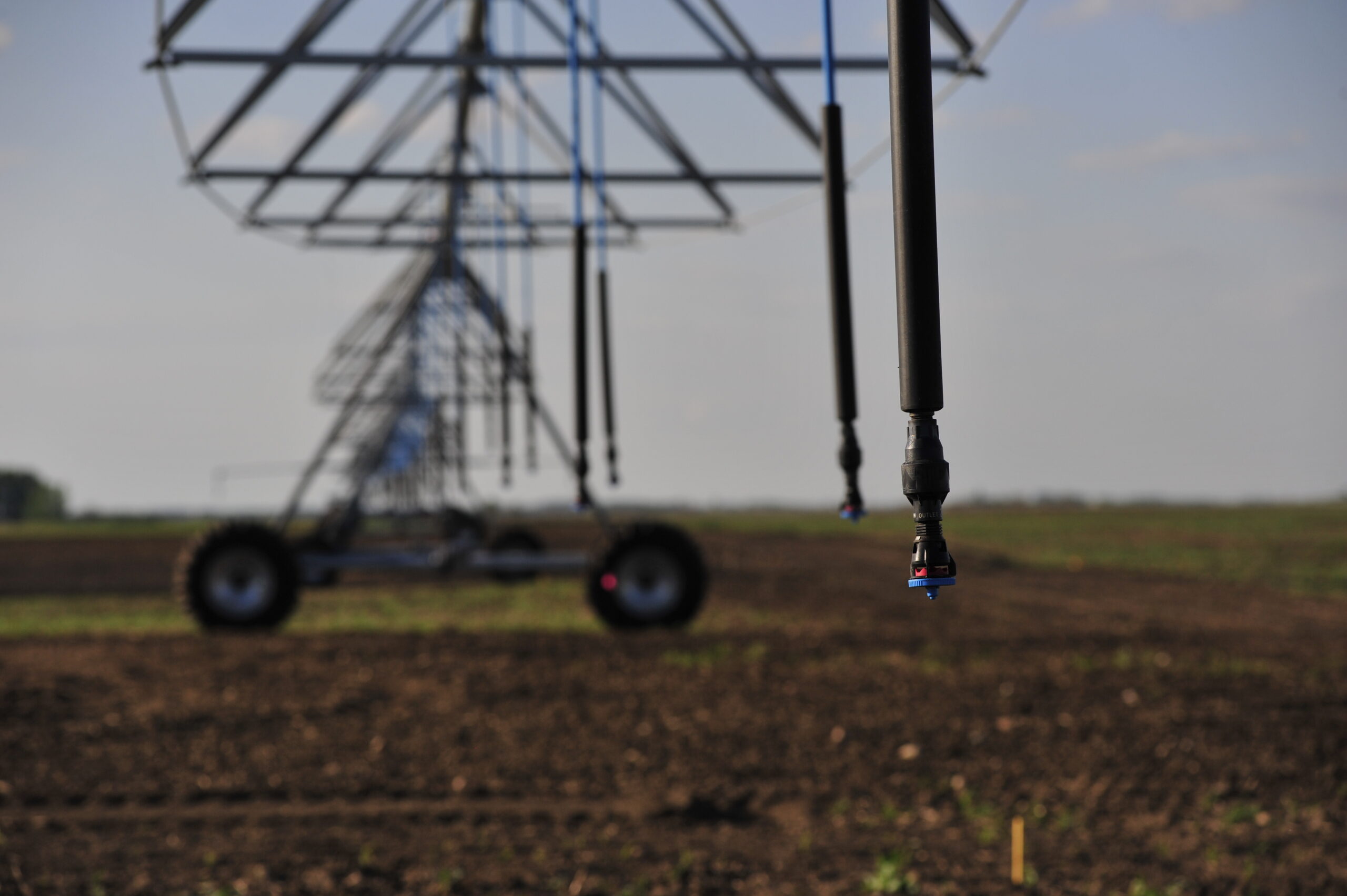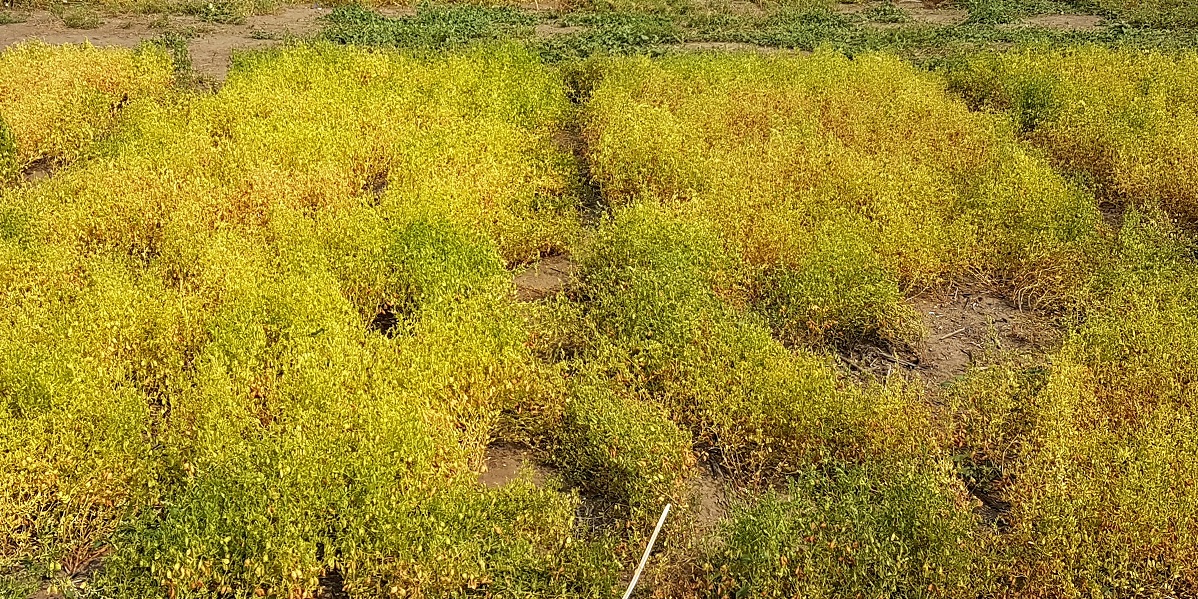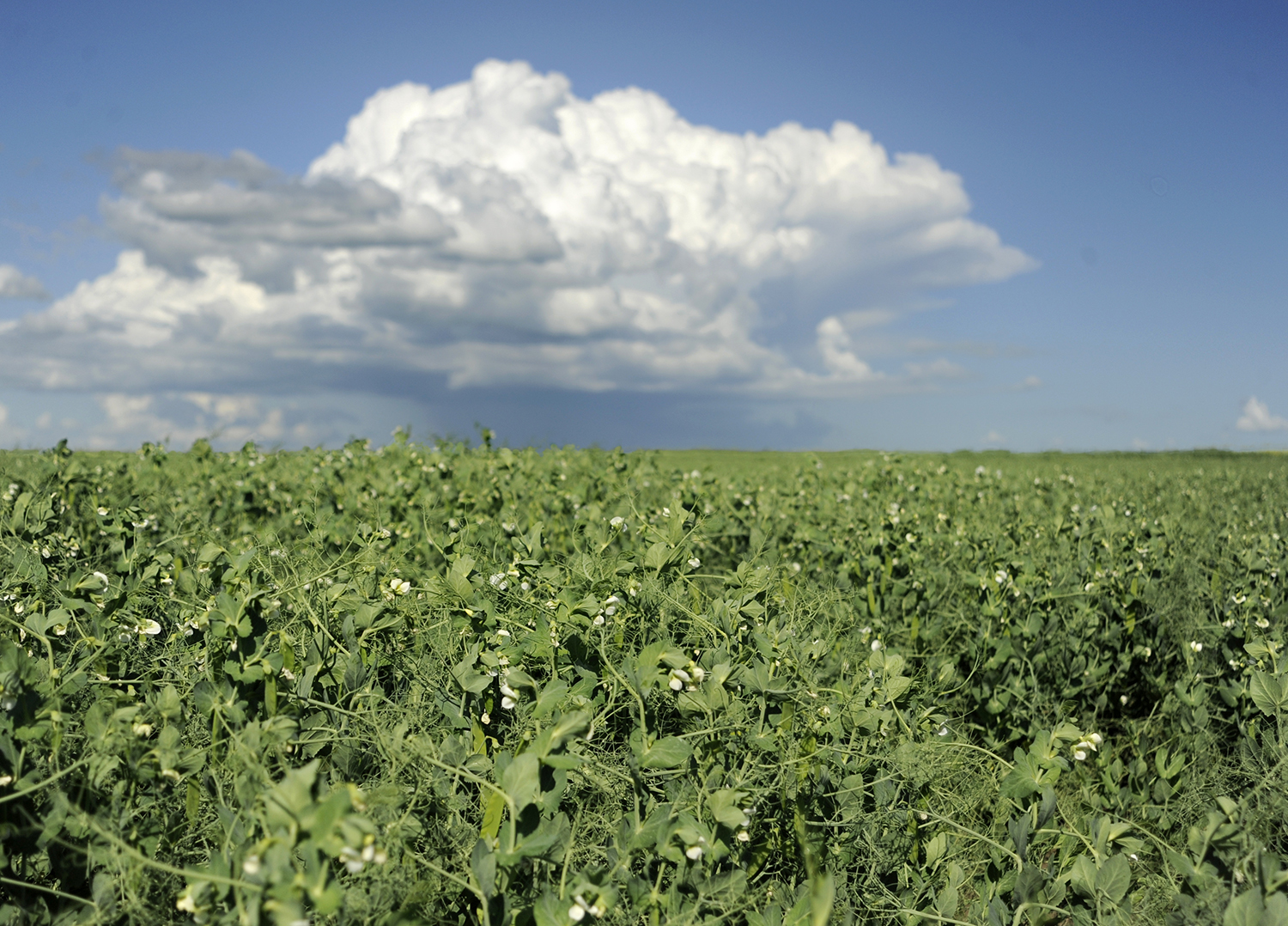By Donna Fleury, P.Ag
Lentils are typically a dryland crop but can be grown under irrigation with careful water management. Lentil plants do not like wet feet and therefore do not tolerate waterlogged soils, and will die if flooded. Excess water in lentil crops can cause problems including delayed maturity, increased disease, and lower yields.
The Canada Saskatchewan Irrigation Diversification Centre at Outlook has conducted several studies evaluating lentil production under irrigation. Gary Kruger, Irrigation Agrologist with the Saskatchewan Ministry of Agriculture provides guidelines for minimizing the risks associated with growing lentils under irrigation, based on research results and grower experience. Irrigated lentil production requires knowledge of dryland lentil production, as well as specific knowledge of irrigation requirements.
When choosing fields for growing lentils under irrigation, select lighter textured fields with excellent drainage to minimize risk of having saturated soils and avoid fields with salinity. Lentils are capable of fixing their own nitrogen over the growing season, so select fields with low nitrogen to encourage maximum fixation.
Field selection also involves reviewing herbicide history and making sure there are no residual herbicide concerns for growing lentils as they are susceptible to soil residues of many herbicides commonly used in Saskatchewan. The Saskatchewan Ministry of Agriculture’s Guide to Crop Protection provides a listing of re- cropping restrictions for lentils. On a similar note, when planning weed control in lentils consider future crop sequence and sensitivity of those high value irrigated crops such as potatoes for re-cropping restrictions. In other words, avoid using herbicides during lentil production that could affect potato production or other crop choices the following year.
Variety selection can also help to reduce risks associated with excessive growth that can result when growing lentil under irrigation. Excessive vegetative growth can result in reduced pod set and seed production, as well as potentially delay maturity. Early maturing determinate varieties, such as red and small green lentils, are more suited to irrigation production because they tend to have less vegetation and are less delayed by late season precipitation. Newer varieties generally have improved disease resistance and better lodging resistance.
When grown under irrigation, lentils should be seeded as early as possible, aiming for late April to early May planting date. Ideally the soil temperature should be 5 °C. The recommended seeding rate is to aim for at least 12 plants per square foot for both red and green lentils. Dense lentil canopies can increase the risk of lodging, and can increase the spread and severity of several diseases. Use 10-12 inch row spacing if possible to keep the stand as open as possible.
Lentils are susceptible to diseases and the greatest disease threat for irrigated fields is sclerotinia. Growers should consider two applications of fungicide during the growing season. The first timing is most beneficial at early flowering, with a second fungicide application about two weeks later, if weather conditions warrant.
Apply the first fungicide just prior to canopy closure so excellent coverage of the foliage is achieved. Also watch for anthracnose, botrytis, root rot, and seedling blight diseases.
Careful water management is key to irrigated lentil production. Recent research at the Canada Saskatchewan Irrigation Diversification Centre at Outlook has found the response of lentil to irrigation to be highly variable. The research shows that lentils typically require a minimum of four inches (10 centimetres) of total moisture through precipitation and irrigation over the growing season. Determining the total amount of irrigation water to apply during the growing season and timing will depend on rainfall and the rate of evaporation.
Although lentil is a shallow-rooted plant and needs significant soil moisture to produce optimum yields, lentils die quickly when flooded. Avoid water accumulation on the surface and water logging of the soil, especially at seeding time. Past research conducted at the CSIDC has demonstrated that over-irrigation in wet years at or before flowering can dramatically reduce yields. Allow the canopy to dry between irrigation events.
Here are some guidelines for water management for irrigated lentil production:
- Start irrigation after seeding to raise soil moisture in the soil profile in a two foot depth to field capacity
- Apply 0.8 to 1.2 inches (two to three centimetres) of water in early June to prevent plant stunting and yield reduction, especially if plants are starting to display drought symptoms
- Irrigation is usually avoided in mid to late June as a slight moisture stress for a brief period after the onset of flowering encourages seed set
- Supplemental irrigation with 0.5 inch (1.2 centimetres) of water just prior to canopy closure may be required to encourage pod formation and filling to reach yield potential of the field and carry the crop’s water needs to maturity
- After this critical period, irrigation should be shut down to allow enough moisture stress to ensure that the crop matures
- If metribuzin (Sencor® or Lexone®) is applied to the crop, delay irrigation for at least two weeks after spraying – this will prevent leaching of the herbicide into the lentil rooting zone, which could result in crop damage
Key Points for Growing Lentils Successfully Under Irrigation
- Choose a lighter textured field with excellent drainage
- Select small red or small green varieties
- Use good disease management strategies (variety resistance and consider fungicide applications)
- Manage water carefully. Know the best stages for supplementing lentils with irrigation
For more information on growing lentils under irrigation, consult Management of Irrigated Lentils, or contact Gary Kruger, Irrigation Agrologist Crops and Irrigation Branch, with the Saskatchewan Ministry of Agriculture at Gary.Kruger@gov.sk.ca, or 306-867-5524.



